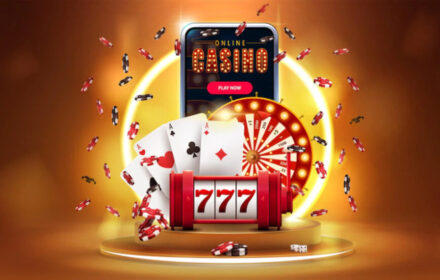The theory of probability in online casinos defines the mathematical foundation of all gambling entertainment and explains why randomness is not chaotic. Every spin, roll, number drawn, or card dealt follows strict laws of event distribution. Understanding these principles helps assess risks, understand odds, and control expectations. Without understanding probabilistic models, gambling turns into blind hope for luck.
Can You Beat the Casino Using Probability Theory?
The probability model explains that in the short term, luck can lead to winnings, but in the long run, the house edge always gives the advantage back to the establishment. The exception is games where strategy reduces risk — for example, blackjack considering the dealer’s card and proper bet distribution.
In slots, roulette, and bingo, it is impossible to influence the outcome: the random number generator and drum create completely independent results. The theory only helps understand how much each spin or combination can cost during a long session.
The Mathematical Advantage of the Casino and Distance
The casino’s mathematical advantage (house edge) reflects the difference between a player’s chances of winning and the payout. Betting $1 on red in European roulette will result in an average loss of $27,000 over a million spins — exactly 2.7%. In slots with a 96% RTP, the player will give back 4% over the same distance.
Distance is a key concept in gambling. Short series can bring large jackpots, but increasing the number of bets reveals real mathematical expectations. Any attempt to cheat the system runs into the immutability of probabilistic laws.
Probability Models in Bingo
Each card contains number combinations, and balls are drawn from the drum randomly. The number of possible cards in classic bingo with 75 numbers reaches: 552,446,474,061,128,648,601,600. The possibility of completing a line or a full ticket depends on the number of balls drawn and the number of players.
The mathematics of gambling shows that the fewer competitors, the higher the chance of winning. With 50 participants and 75 balls, the chance of getting a “full bingo” after 45 drawn balls is 0.01%. This value drops rapidly as the number of players increases. The game’s structure rules out the possibility of influencing the outcome — bingo always depends on pure chance and the number of tickets in the draw.
Slot Mathematics: How RTP and Volatility are Connected
The theory of probability in online casinos is particularly important in slots, where random number generators are used. Each spin of the reel is independent of the previous one and follows predetermined symbol outcomes. The Return to Player (RTP) indicates the average return over a long distance. For example, a machine with 96% RTP theoretically returns $96 out of every $100 after millions of spins, not in a short session.
Slot volatility shows the frequency and size of winnings. High volatility implies rare but large payouts; low volatility means frequent but small wins. When trying to calculate the probability of winning in slots, the number of symbols on the reels and the number of paylines are taken into account.
For example, if a slot has 5 reels with 3 symbols each and 10 lines, and a rare symbol appears with a 1 in 100 chance, the chance of getting a combination of five such symbols could be 1 in millions.
Roulette and Strict Proportions
Roulette is a symbol of the casino’s mathematical advantage. The European model has 37 sectors, including zero, creating a 2.7% house edge. The American version with an additional zero increases the advantage to 5.26%.
When betting on red or black, the chance of winning is 18/37 ≈ 48.6% in the European version. Calculating the house edge shows that each bet loses an average of 2.7% of the amount over the long distance.
To understand how to calculate the probability of winning in roulette, it is enough to consider the number of sectors and the distribution of bets. For example, betting on a single number gives a 1/37 chance (2.7%), and a 35 to 1 payout only partially compensates for the risk — the player’s actual return is always lower than the full probabilistic bet.
Blackjack and the Role of the Deck
Cards from the deck decrease or increase the chances of getting the desired combination. For example, if four tens have already been drawn from a 52-card deck, the chance of drawing the next one drops from 16/52 to 12/48. Card counting helps get closer to the real odds, although completely eliminating the house edge is not possible.
When analyzing how to calculate the probability of winning in blackjack, the number of decks, dealer rules, and the possibility of doubling are taken into account. With basic strategy, the casino’s advantage decreases to 0.5–1%. However, additional decks increase the complexity of calculations and return the advantage to the establishment.
Poker, Bingo, and Other Games: Different Laws of Probability
Each deal is based on calculations of combinations and bank odds. With a 52-card deck, the chance of getting a flush with five cards is 0.198%. Bingo remains a purely random game, and slots are entirely dependent on the number generator.
Gambling games use complex probability schemes, but the principles remain the same: the casino’s mathematical advantage always remains. The theory helps understand the limits of luck and correctly assess risks.
Probability Theory in Online Casinos: Conclusions
The theory of probability in online casinos shatters the illusion of uncontrollable luck and reveals the strict mathematics of gambling entertainment. It explains how RTP, house edge, deck, and drum work, why fortune can smile in a short session, but distance always tilts the balance in favor of the casino. Understanding these laws helps make informed decisions and play responsibly.
 en
en  ru
ru  de
de  ar
ar  es
es  nl
nl  hi
hi  fr
fr  it
it  pt
pt  el
el 

